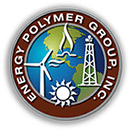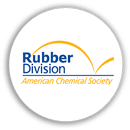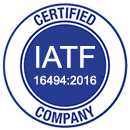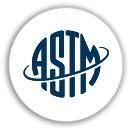ASTM F477: Standard Specification for Elastomeric Seals (Gaskets) for Joining Plastic Pipe
ASTM F477 is a standard specification developed by ASTM International that defines the requirements for elastomeric seals (gaskets) used in joining plastic pipes. These seals are essential components in piping systems, ensuring leak-free and durable connections for water, sewage, drainage, and industrial applications.
By following ASTM F477, manufacturers ensure that elastomeric gaskets meet strict performance criteria, including dimensional accuracy, physical properties, and long-term durability under various environmental conditions.
Purpose and Importance of ASTM F477
The ASTM F477 standard is designed to:
- Ensure Watertight Seals: Provides guidelines for gaskets that prevent leakage in plastic pipe joints.
- Standardize Material Quality: Specifies the physical and chemical properties required for elastomeric seals.
- Improve System Longevity: Ensures that seals can withstand environmental stress, pressure, and temperature variations.
- Enhance Compatibility: Defines gaskets suitable for different plastic pipe materials, such as PVC, CPVC, PE, and PP.
Key Requirements in ASTM F477
1. Material Specifications
The gaskets must be made from high-quality elastomeric compounds, including:
- Natural Rubber (NR)
- Styrene-Butadiene Rubber (SBR)
- Nitrile Rubber (NBR) – for applications exposed to oils and chemicals
- EPDM (Ethylene Propylene Diene Monomer) – ideal for water and sewer pipes due to its excellent weather and ozone resistance
2. Physical Properties
To ensure durability and flexibility, ASTM F477 specifies minimum physical requirements, including:
- Tensile Strength: Must meet or exceed 1450 psi (10 MPa).
- Elongation at Break: Minimum of 250%.
- Compression Set: After compression and recovery, the gasket should retain its sealing properties.
- Hardness (Durometer Shore A): Typically between 50-70, ensuring flexibility and proper sealing.
3. Chemical Resistance
Gaskets must resist deterioration from:
- Water and wastewater chemicals
- Oils and fuels (for specific applications)
- Temperature fluctuations
- Microbial and fungal growth
4. Dimensions and Tolerances
Gasket dimensions must conform to industry standards, ensuring proper fitment with various plastic pipe types.
Applications of ASTM F477
Elastomeric gaskets covered under ASTM F477 are used in a variety of piping systems, including:
- Potable Water Systems: Ensuring leak-proof connections in drinking water pipelines.
- Sewer and Drainage Systems: Preventing infiltration and exfiltration in underground pipelines.
- Irrigation Systems: Used in agricultural water distribution networks.
- Industrial Piping: Providing sealing solutions in chemical and processing plants.
Benefits of ASTM F477 Compliance
- Leak Prevention: Reduces water loss and prevents soil contamination.
- Long-Term Durability: Ensures gaskets maintain flexibility and sealing performance over years of service.
- Regulatory Compliance: Meets industry standards for safety and environmental protection.
- Versatility: Compatible with multiple plastic pipe materials, allowing for broad application.
Challenges in ASTM F477 Testing
- Material Selection: Different environments require different elastomeric compounds.
- Installation Factors: Proper gasket installation is necessary to maintain seal effectiveness.
- Aging and Degradation: Environmental conditions can impact gasket lifespan over time.








